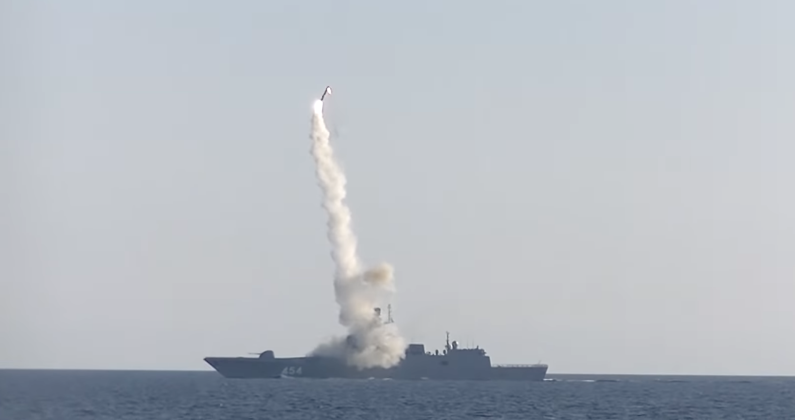The development of a mobile launch vehicle for Russia’s 3M22 Zicron hypersonic cruise missile has reached prototype stage, according to a November 4 report by Russian state media outlet TASS citing an anonymous defence sector linked source. “The prototype of a mobile launcher of a coastal defence missile system, using a Tsirkon hypersonic missile, has already been created. As was the case with the Bastion system, the launcher will carry two missiles,” the source was quoted to have stated. This was far from isolated, with multiple prior reports indicating that the Zicron was intended to be integrated into a mobile costal defence system similar to the Bastion system, which is currently widely in use and employs the Zicron’s direct predecessor the P-800 Oniks. Where the P-800 had a Mach 3 speed and 600km range, however, which was increased to 800km for the lates variants, the Zicron’s use of a hypersonic glide vehicle provides a Mach 9 speed, greater manoeuvrability and a range estimated at 1200-1500km. A plasma stealth capability for the new missile has also been reported but not confirmed.

The Zicron was first delivered to the Russian Navy in late 2019, and its performance has no near peer rivals in the world. The missile’s capabilities reflect the status of hypersonic weapons as one of the few remaining areas where Russia’s defence sector retains a strong lead over China and the United States, with the Russian Military capitalising on this to use such missiles for a wide range of roles from strategic deterrence to anti shipping. The Zicron’s sheer speed makes it nearly impossible to intercept, and allows it to cripple any warship class with a single well placed hit due the combination of its warhead and its tremendous kinetic energy upon impact. The missile is particularly important for Russia due to the country’s far smaller defence budget relative to rival NATO states, far smaller Navy, and ageing fleet of ocean going surface ships, as it allows even small ships such as stealth corvettes or old ones such as Udaloy Class destroyers to challenge surface fleets that would otherwise be much more capable. The Zicron has been integrated onto surface combatants and submarines already, the latter in late 2021, and its deployment from ground launchers would provide a low cost means of quickly multiplying the numbers available.

Use of coastal defence systems with highly capable anti ship missiles is another asymmetric means for Russia to keep foreign surface fleets at bay, and is expected to be supplemented by the later integration of the Zicron onto aircraft. The bulkier Kinzhal hypersonic missile, a ballistic rather than cruise missile, has already been integrated into the Russian Air Force. Like the Kinzhal, the Zicron is expected to eventually be relied on to engage not only surface, but also ground targets, which would multiply the utility of mobile launch vehicles considerably. The preceding Bastion system and its P-800 missiles have notably unexpectedly proven highly effective against land targets since the outbreak of the Russian-Ukrainian War in February, drawing speculation that it was intended as a dual use system from the outset, with its successor system accommodating the Zicron is potentially also intended from the outset to be a similarly versatile asset.
